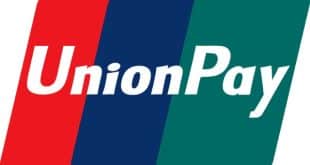It’s a good time to be a point-of-sale terminal maker when all of your customers have to go through the payments equivalent of abandoning the horse and buggy and jumping into an automobile. With a major U.S. deadline for converting from magnetic-stripe payment cards to the Europay-MasterCard-Visa (EMV) chip card standard now just 13 months away, POS payment technology provider VeriFone Systems Inc. on Thursday reported that sales of its chip-card-reading equipment are brisk.
“EMV migration continues to drive sales for VeriFone,” VeriFone chief executive Paul Galant said during the company’s earnings conference call for fiscal 2014’s third quarter ended July 31. Some 14 large retailers upgraded their payment systems to VeriFone’s EMV-capable MX 900 line of terminals, he said, including one global retailer that ordered 40,000 units. VeriFone wouldn’t identify the retailer.
“More than 80% of products shipped in U.S. were EMV capable, up from approximately 70% in the first quarter,” Galant said.
There’s plenty of upside left in the EMV conversion even though it is now three years since Visa Inc. announced the first U.S. chip card adoption plan. Big-box retailers have led the conversion, but many other merchant sectors are only getting started. About 30% of U.S. terminals are now capable of accepting EMV cards, according to Galant. “So, still an awful lot of the terminals need to be converted,” he said, noting that the 14 recent MX 900 terminal buyers did not include hospitality merchants or quick-service restaurants “that we believe are still coming.”
The major payment networks have set a so-called liability shift for October 2015 in which the party in a card transaction that cannot support EMV payments—issuer or merchant—will be responsible for any resulting counterfeit card fraud. Fuel-pump operators have two years beyond that to convert.
Galant also noted that virtually all of VeriFone’s EMV terminals include a near-field communication (NFC) chip, which will enable contactless payments between such terminals and smart phones. “A migration to EMV will certainly significantly increase the installed base of NFC terminals and the potential for the use of NFC in payment and commerce moving forward,” he said.
The payments world has been abuzz this week with rumors that Apple Inc. will include an NFC chip in the next model of its iPhone, which it is expected to unveil next Tuesday.
Boosted by sales of its EMV equipment in addition to strong business from U.S. petroleum retailers, VeriFone reported North American revenues of $129.8 million, up 12.1% from $115.8 million in fiscal 2013’s third quarter. VeriFone had some wins in other countries too, including France, home of its arch rival Ingenico Group. France’s largest bank, BNP Paribas, picked VeriFone as its countertop POS terminal supplier for small merchants. In Canada, the Interac debit network certified VeriFone equipment for contactless payments at unattended merchant locations, which will be provided by merchant acquirer Moneris Solutions.
In China, which Galant sees as potentially a bigger market than the United States, VeriFone struck a deal to supply the leading bank, ICBC, with 75,000 countertop terminals, PIN pads and related hardware. Testing on the first devices begins in the fourth quarter.
VeriFone’s equipment has been priced above what most Chinese merchants want to pay. That price resistance spurred VeriFone to develop what Galant called a “home-grown product” with fewer bells and whistles than typical POS systems for North American merchants.
Galant also said VeriFone is making steady progress on its “One VeriFone” initiative to cut costs and unify its sprawling worldwide operations. The company in recent months has reduced its head count by 375, with about 125 more jobs to go, closed 14 facilities, liquidated 13 of 132 legal entities, and consolidated a number of data centers and research-and-development facilities. VeriFone also has cut its product count from about 1,000 to 525 and has reduced its operating systems, with the ultimate goal of products built on one platform.
VeriFone’s total third-quarter revenues grew 14.4% to $475.9 million. The company reported a net loss attributable to shareholders of $29 million versus a loss of $1.9 million a year earlier. Adjusted for one-time gains and expenses, net income grew 71% to $45 million from $26 million in the year-earlier quarter.




